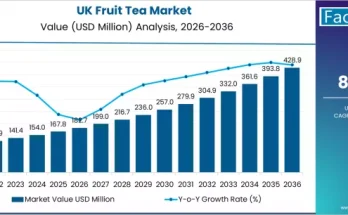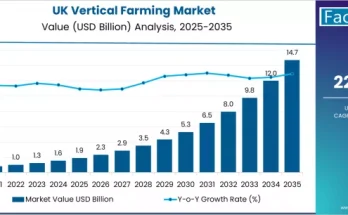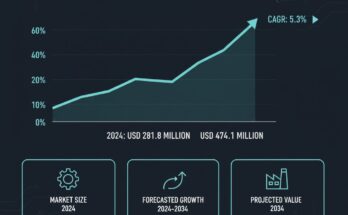The global brandy market is positioned for steady expansion from 2025 through 2035, driven by premiumization, category modernization, diversified consumption occasions, and rising demand in Asia-Pacific and North America. Across leading market assessments, the brandy sector is estimated at USD 14–42 billion in 2025, with long-term projections indicating a climb toward USD 35–46 billion by 2035, supported by an approximate 5–6.5% CAGR over the forecast decade. Despite varying methodologies between research firms, all major models align on a robust upward trajectory anchored in consumer trading-up behavior and portfolio premium value growth.
Key Market Insights
-
2025 Estimated Market Size: USD 14B – 42B
-
2035 Forecast Range: USD 35B – 46B
-
Projected CAGR (2025–2035): 5% – 6.5%
-
Growth Drivers: Premiumization, RTD innovation, modern distribution, expanding middle class in emerging markets
These consolidated projections reflect a balanced midpoint of reported industry ranges, giving brand owners, investors, and distributors a realistic outlook for strategic planning.
Drivers of Market Expansion
1. Premiumization and Heritage Branding
Premium & super-premium brandies continue outpacing standard segments as consumers gravitate toward aged expressions, craft labels, and authenticity-driven storytelling. Modern packaging and elevated retail positioning are strengthening price resilience and improving per-case margins. Heritage cues—origin appellations, barrel aging, artisanal distillation—remain powerful purchase triggers.
2. Rapid Growth in Mixology and RTD Spirits
Brandy’s versatility in cocktails has sparked renewed relevance among younger consumers. Mixology-led bars, social media cocktail culture, and collaborations between distilleries and RTD (ready-to-drink) manufacturers have expanded brandy’s presence beyond its traditional after-dinner niche. RTD expansions—such as brandy highballs, spritz variations, and premium craft blends—are expected to remain the category’s fastest-growing product innovation area through 2030.
3. Distribution Transformation
Retail modernization and digital acceleration have reshaped access to brandy worldwide. E-commerce alcohol delivery platforms, click-and-collect retail, and duty-free channels are increasing penetration in high-growth markets. In emerging economies, modern off-trade formats (supermarkets, specialty liquor chains) are reducing barriers to brand entry and enabling premium positioning strategies previously limited to established regions.
Segmentation Outlook
• Price Tier Performance
-
Economy & Standard: Stable—retain largest volume share.
-
Premium & High-End: Strongest value growth; expected to capture disproportionate revenue share by 2030.
• Product Type Trends
-
Traditional Brandy & Cognac: Remain category anchors with steady demand.
-
Aged and Single-Estate Expressions: Demonstrate higher price elasticity and consumer loyalty.
-
Flavored and Experimental Brandies: Gain traction among younger demographics; ideal for RTD and cocktail integration.
• Distribution Channel Breakdown
-
Off-Trade (Retail & E-Commerce): Fastest-growing due to convenience and selection breadth.
-
On-Trade (Bars, Restaurants, Hotels): Essential for brand education, premium sampling, and experiential marketing.
-
Duty-Free: Boosted by global travel recovery, premium gifting, and traveler-oriented product lines.
Regional Market Snapshot
Asia-Pacific
Asia-Pacific is projected to deliver the most significant growth, fueled by an expanding middle class, rising disposable income, and premium gifting culture in China, India, and Southeast Asia. Urban consumers show increasing openness to global spirits categories, particularly premium aged variants.
Europe
Europe remains the heritage home of several brandy styles, with steady, mature-market growth. Premium and super-premium expressions—especially in France, Spain, and Central/Eastern Europe—continue to dominate value contributions. Consumer preference leans toward authenticity, regional identity, and established origin standards.
North America
North America is experiencing a revival in brandy interest driven by cocktail culture, craft distilling, and strong demand for flavored and mixology-friendly spirits. RTD cocktails with brandy bases are trending upward in convenience channels.
Latin America & Middle East
These regions show moderate but rising interest in premium spirits, especially where tourism and hotel investments are expanding on-trade exposure.
Challenges and Restraints
Despite strong fundamentals, several headwinds may impact growth:
-
Taxation & Regulatory Complexity: Varying duties and alcohol policies affect trade flows, particularly for imported aged brandies.
-
Intense Competition from Whiskey & Rum: Both categories are aggressively innovating in premium and RTD segments.
-
Consumer Fragmentation: Younger consumers value experimentation, but loyalty may fluctuate without sustained brand engagement.
Nonetheless, strategic differentiation and innovation are expected to offset competitive pressures.
Opportunities for Market Participants
1. High-End Aged Spirits
Older, cask-finished, and limited-edition releases hold excellent potential for margin expansion as collectors and connoisseurs increasingly seek craftsmanship-rich spirits.
2. Innovation in RTD & Mixology Partnerships
Collaborations with mixologists, beverage brands, and hospitality operators can create niche cocktail experiences that elevate brand visibility.
3. Digital-First Distribution Strategies
Direct-to-consumer channels, subscription clubs, and virtual tastings are becoming crucial brand-building tools—particularly for premium labels seeking global reach.
Browse Full Report : https://www.factmr.com/report/brandy-market
4. Sustainability & Packaging Initiatives
Eco-friendly packaging, reduced-carbon distillation processes, and circular production models appeal strongly to conscientious consumers and can differentiate brands in competitive markets.
“The next decade will redefine how consumers engage with brandy,” said a senior spirits market analyst who contributed to the outlook. “Premiumization will continue to serve as the backbone of category expansion, but the brands that innovate in cocktails, digital channels, and experiential marketing will shape the highest-growth opportunities.”



